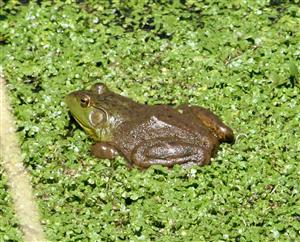Have you ever seen a tropical bird flying around Denver, or caught a strange-looking fish in a mountain stream? It happens — but it shouldn’t. Sometimes people think releasing an animal back into the wild is a kind way of letting it go free — but this is far from the truth. In fact, when you release a pet or laboratory specimen into the wild, it generally is either not adapted for Colorado’s climate, or never learned the necessary skills to fend for itself, or both. Further, non-native species can harm the ecosystem in a variety of ways, from spreading foreign parasites and diseases to altering native species’ gene pools. Therefore, if you have an unwanted animal, consider donating it to a shelter (if a pet animal) or see about donating it to a classroom or a local museum or aquarium. You can find out more information about the hazards of releasing non-native species into the wild by visiting the Colorado Division of Wildlife’s Don’t Turn it Loose webpage. You can also search our library’s web catalog for further information on non-native and invasive species and their effects.

- How to Spot the Differences Between Eagles and Hawks - August 16, 2021
- How Transportation Projects Help Tell the Story of Colorado’s Past - August 9, 2021
- Time Machine Tuesday: The Night the Castlewood Canyon Dam Gave Way - August 3, 2021